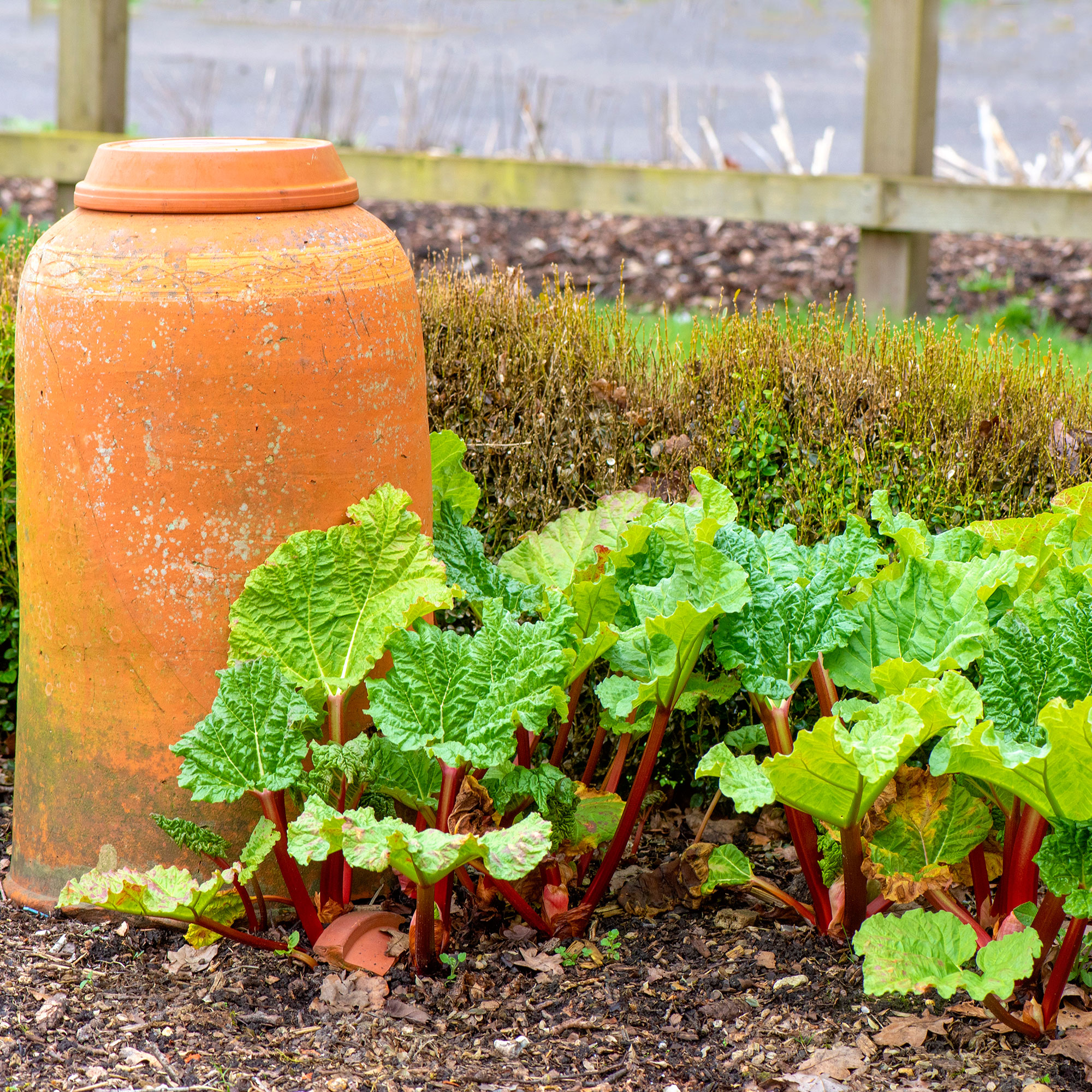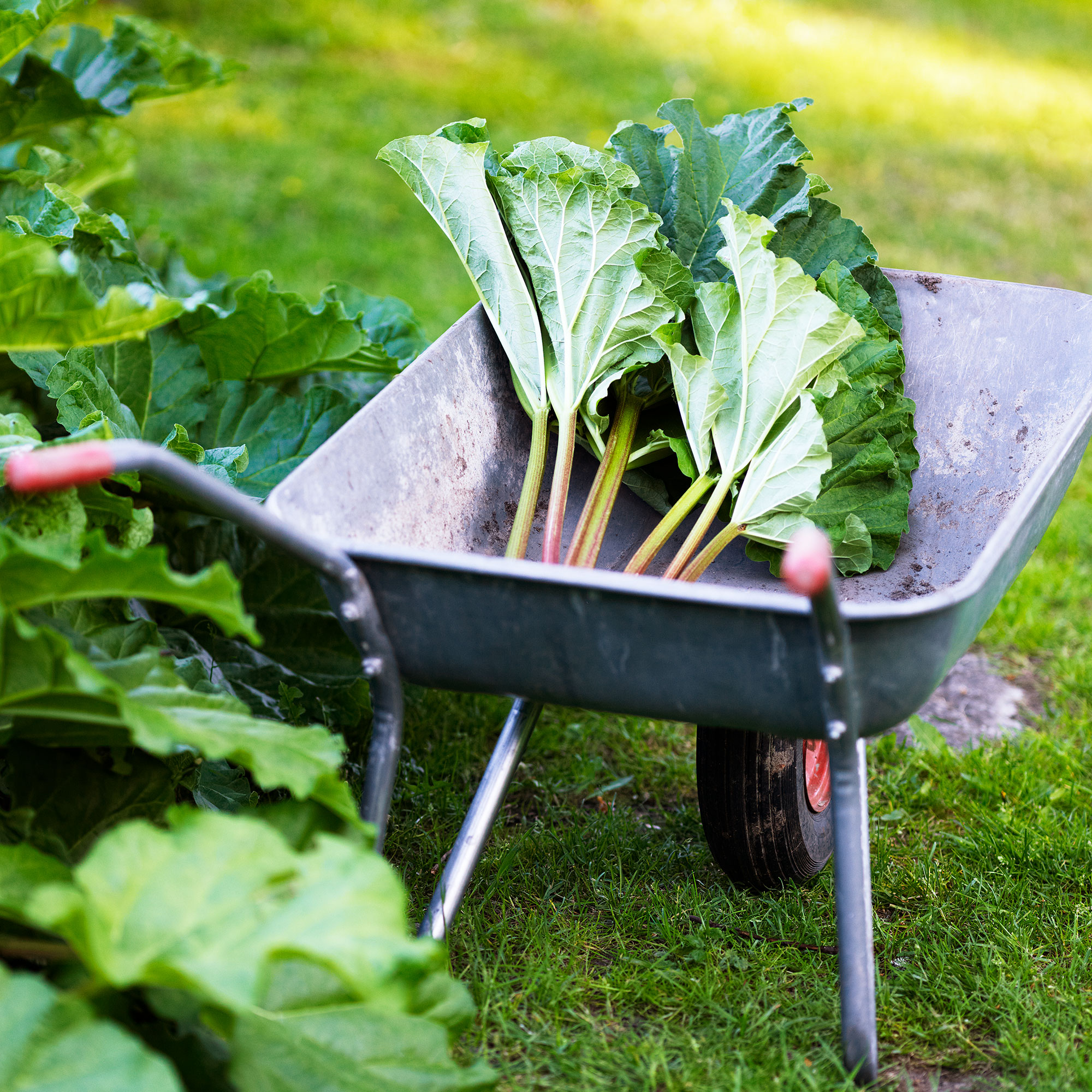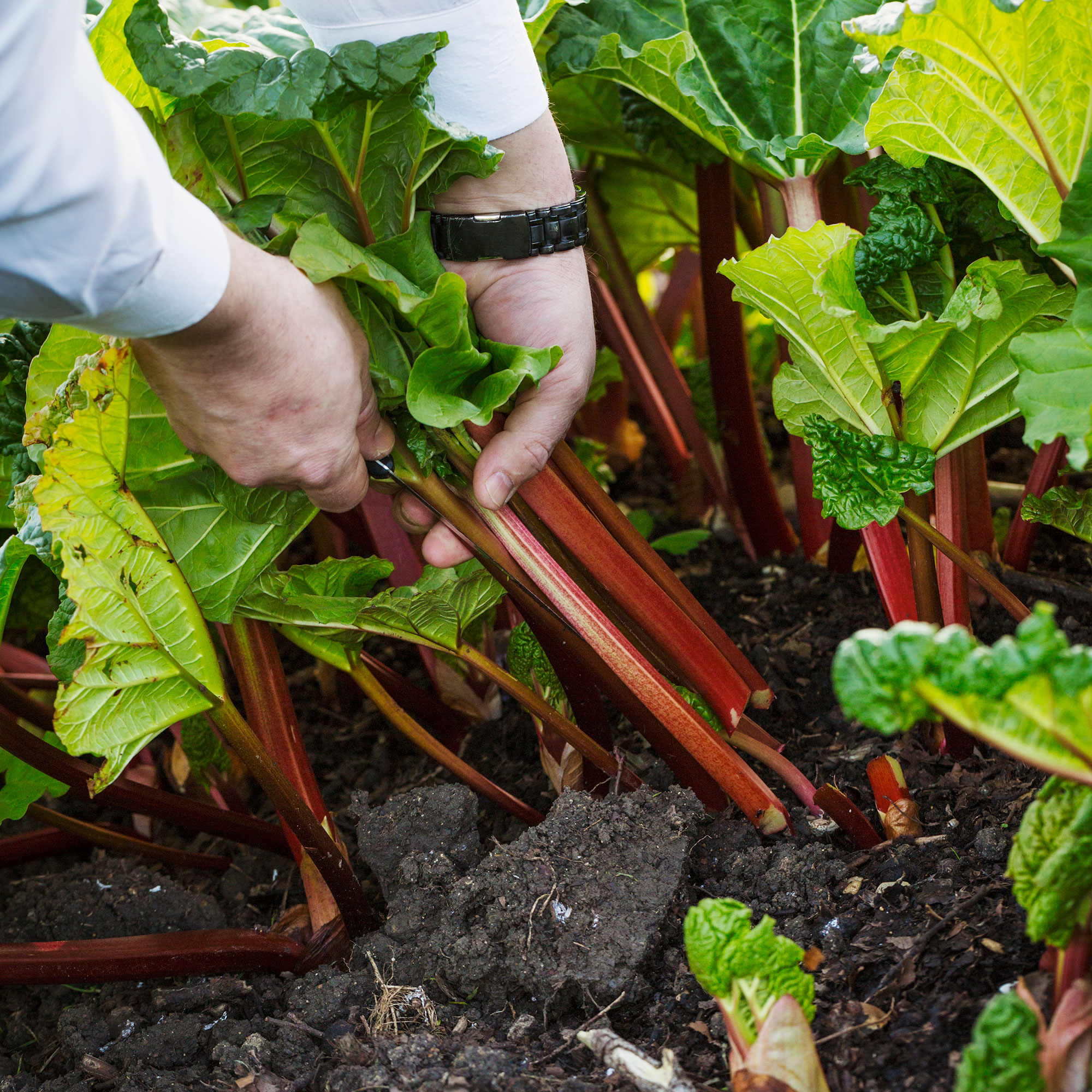
Rhubarb is a common ingredient in fruity crumbles, sweet treats, and cocktails, but it might surprise you to learn that rhubarb is actually a vegetable. And if you’re planning on growing this vegetable at home, you should also know when to harvest it.
Yes, if your garden ideas include a fruit and vegetable patch, then growing rhubarb is a safe and easy option. Not only is it incredibly fast-growing, but it’s also incredibly low-maintenance - and you can even grow rhubarb in pots. But anyone who has ever tasted rhubarb before it’s ready will know just how sour and tart it can be.
That’s why knowing when to harvest rhubarb is just as important as knowing when to plant rhubarb. If you choose the wrong time, you’ll not only affect the taste of the rhubarb, but you’ll also affect the future growth of the plant.
When to harvest rhubarb
Harvesting homegrown produce is an exciting prospect for any gardener, but patience is key when harvesting rhubarb. In fact, you need to wait a few years before harvesting rhubarb for the first time.

Budget Seeds' gardening expert, Craig Morley, says, ‘If you have newly planted rhubarb, avoid harvesting stalks in the first year as this can potentially reduce the vigour of the plant. To make the plant last longer and grow strong, pick only a few stalks the following year. After this, the rhubarb plant should be well-established enough to be harvested normally.’
The general rule of thumb states that you should only start harvesting your rhubarb properly when it’s three years old. Then, it’s all about choosing the right time of year and looking for the tell-tale signs of ripeness.
In terms of timing, it’s best to harvest rhubarb in spring. Steve Chilton, garden expert at LeisureBench, explains, ‘Rhubarb should be ready to harvest anywhere from spring to early summer, so around April-May/very early June time. Of course, this completely depends on the variety, and there are some earlier and later varieties that will be ready at different times.’

But while the window to harvest rhubarb is pretty wide, you should also inspect the rhubarb to spot the visual signs that it’s ready to harvest. This is when the stalks are over 25-30cm long. If they’re less than 25cm long, you should wait a few more weeks before prepping the topping for your rhubarb crumble.
Another telltale sign that rhubarb is ready to be harvested is the leaves. If they’ve recently unfurled themselves, the stalks are ready to be picked. However, it’s also important to note that, unlike carrots and cauliflowers, you cannot eat the leaves of rhubarb. You should only eat the stems, as the leaves are incredibly poisonous.
Of course, many people assume that they have to wait for the stalks to turn red before harvesting rhubarb - but this is totally dependent on the variety of rhubarb you’ve planted. In some cases, you should wait until the stalks turn red for the perfect amount of sweetness, but some rhubarb varieties won’t turn red at all and will stay green.

With this in mind, the size of your rhubarb stems matters most when it comes to harvesting rhubarb and knowing when rhubarb is ready to be picked. And when you’re ready to harvest, the process couldn’t be simpler.
‘To harvest rhubarb, you need to gently hold the base and pull,’ explains Steve. ‘You might have to twist at the stalk slightly to remove it from the plant, and I recommend only harvesting a few stalks from a plant at a time in order to ensure the plant stays healthy and can continue to grow more stalks.’
However, it’s important to wrap up your rhubarb harvest by May or early June at the latest, which is why harvesting rhubarb is one of the best jobs to do in the garden in May.
Craig says, ‘Even though the stems of a rhubarb plant will remain edible into the summer, it is best to stop harvesting around June or reduce the amount of stalks that you are taking, as this can weaken the plant. By mid-summer, the stalks of the plant may become tough and stringy.’
FAQs
How do you know when rhubarb is ready to pick?
The easiest way to know when rhubarb is ready to pick is to look at the size of the stalks and the state of the leaves. If the stalks are over 30cm long and the leaves have recently unfurled themselves, this is a clear sign that they are ready to be harvested.
However, if your rhubarb plant is less than three years old, you should avoid harvesting it within these early years. Instead, wait until it is more established to ensure a fruitful harvest for the next decade.
When can I dig up and move rhubarb?
Rhubarb can grow and spread incredibly quickly, which means it can overpower your fruit and vegetable patch in no time. If you’re not happy with the placement of your rhubarb and want to give it more space to spread out, you can dig it up and move it during its dormant period.
While you can plant in the late autumn and winter months, it’s best to wait until early spring to transplant rhubarb. You should aim to complete this job before new growth starts to form.
How do you ripen green rhubarb?
Contrary to popular belief, green rhubarb might not need ripening. Many varieties of rhubarb are green and will never actually turn red.
In other cases, you may find that you have largely green stems, with a hint of red here and there. Because of this, it’s better to base a rhubarb’s ripeness on the size of the stalks and the state of the leaves.
Steve says, ‘The colour of the rhubarb differs per variety and condition, so don't worry too much about its colour, although it's often at its brightest when ready to harvest.’
So, how’s your rhubarb coming along?







